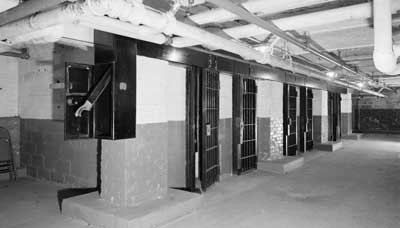
CORRECT-alcatraz_big
Early in the 19th century, prisoners in solitary confinement were placed in a dungeon-like setting and prohibited access to others and activities, 24 hours a day for days on end. While the intent of solitary confinement was initially rehabilitative and designed to reduce hangings, the results were nearly as tragic. Mental decline and insanity were frequently reported and many prisoners preferred public lashings when given a choice, because the pain of lashings would result in no permanent mental damage.
Some form of restricted confinement has always been used in prisons for problematic inmates. Problematic in today’s terms means those who are a danger to themselves or others, or present significant security concerns. Segregation within today’s prisons has many terms, including administrative segregation or disciplinary segregation; however, it’s sometimes still referred to as solitary confinement. While those in the business realize today’s solitary confinement is neither solitary nor total confinement, it’s the term bantered about by prisoner rights’ groups. Specifically, these groups are concerned about long-term confinement of prisoners with mental illnesses, and frequently compare current practices to the 19th-century version when presenting their cases in litigation.
Today’s solitary confinement usually amounts to the prisoner being locked in a lit, well-heated and ventilated cell with running water and toilet facilities for 23 hours. Inmates are permitted 1 hour of recreation outside of their cells most days, and have daily interaction with security, medical and other staff. They converse with each other through cell doors, read, write and send and receive mail at a minimum. In many long-term segregation units, a structured treatment plan and intervention attempts designed to work the offender back to general population housing are available. Unfortunately, this is not safely possible in all cases.
Flood Gates Opened
Criminalization of the mentally ill accelerated in the 1980s when budget cuts for social programs caused a marked decrease in community and in-patient mental health treatment. To coincide with this decrease, the percentage of prisoners with mental illness jumped from 5 percent in 1980 to approximately 20 percent fairly quickly. A 2006 Department of Justice study indicated more than half of all inmates had some form of mental health issue.
Because they could not get treatment on the street, mentally ill individuals would commit mostly minor offenses and end up in jail, where acting out was viewed as a disciplinary problem rather than a result of an illness. The staff, doing what they were trained to do, reacted in a punitive way. Inmates who committed conduct violations were eventually placed in disciplinary custody where they committed more conduct violations and soon had disciplinary time extending beyond their natural lifetimes. It’s a vicious circle and administrators of these facilities quickly began to question the compounding disciplinary sanctions.
They discovered the alarming increase in mental illness among the population had a direct correlation to the increase in disciplinary time and found most of these inmates never received treatment before their incarceration. It seems logical this was due to the reduction of community services. Administrators have a responsibility to keep the lid on the place and to keep the other inmates and staff safe, so they had no choice but to allow the practice of segregating these inmates to continue. Sometimes this long-term segregation situation only served to aggravate the inmate’s condition.
Many people believe solitary confinement is
still like it was in the days of Alcatraz. Is it?
Fix The Problem
In response, many facilities developed programs, some licensed and some not, designed to assist offenders in reducing their disciplinary sanctions and earning their way back to general population through participation, good behavior and medication compliance. Employees assigned to these units were trained in managing inmates with varying mental illnesses and operating programs under the guidance of qualified mental health staff. Sometimes these programs were successful and the inmates returned to general population to the same staff who did not understand how to manage them successfully and to other inmates who treated them with suspicion and balked at disparate treatment when they were managed differently. Soon the mentally ill inmate returned to segregation, often purposefully orchestrated by the inmate because the segregation unit was where he felt safest.
The bill is due. We’ve been paying for those 1980 budget cuts with interest for too long. While the culture of prisons has changed dramatically in the past 30 years, the culture is still not one ready to approach inmates with different problems in different ways. It’s time to devote entire facilities to manage these cases with all staff trained to deal with them.
Community resources need to be increased to a level to prevent many of these individuals from coming to prison in the first place. I’d think this would be money well spent and result in a savings for those paying the bill another 30 years from now.
By D.M. Chamberlain
Read More Corrections Articles
View The American COP December 2013 Issue Now!

















